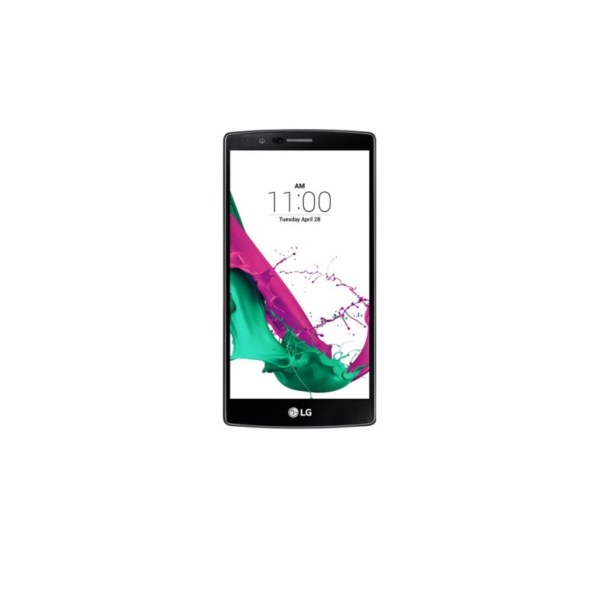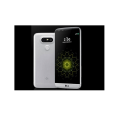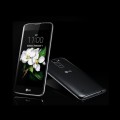LG G4


-
CPU:
-
RAM:
-
Storage:
-
Display:
-
Camera:
-
OS:
With the G4, LG focused on delivering comfortable elegance, a great visual experience and a human-centric user experience. The LG G4 camera features a rare-in-smartphones F1.8 aperture lens which allows 80 percent more light to hit the image sensor than in the LG G3. The innovative camera module is paired with the new IPS Quantum Display that is better in every way than the innovative Quad HD display introduced to the world in the LG G3. The LG G4 embodies human sensibility that is clearly visible in its Slim Arc exterior design and graphical user interface.
“We are living up to our promise of Innovation for a Better Life with a fashionable, premium smartphone that is more focused on delivering a balanced user experience that can compete with the best of the best,” said Juno Cho, president and CEO of the LG Electronics Mobile Communications Company. “We wanted to give consumers a truly human-centric device that combined the analog sensibilities with technologies that delivered real world performance. From the design to the camera to the display to the UX, this is the most ambitious phone we’ve ever created.”
Comfortable & Elegant Design
LG paid special attention to the materials utilized in its newest flagship. The LG G4 is available in handcrafted, genuine full grain leather in six beautiful colors. The vegetable tanning process employed is an age old tradition that requires skilled craftsmen to produce and dye the leather. The colors of the leather on the G4 are rich with warm tones that look authentic and change over time. Most importantly, vegetable tanned leather is environmentally friendly and can be recycled easily, since no harsh chemicals are used. Other material options for the G4 rear cover include pure Ceramic White with 3D patterns, artisan-forged Metallic Gray as well lustrous, Shiny Gold.
The fashionable elegance of the LG G4 is a refreshing change from the uniformly flat, full metal designs that have been become standard across the industry. The LG G4’s design is defined by the Slim Arc, which runs along its entire body, highlighted by a display with a subtle curvature. More than just a design accent, Slim Arc offers 20 percent better durability than a flat smartphone in face-down drops and gives the smartphone a more comfortable and secure feel in the hand.
The exterior design is also reflected in the smartphone’s user interface, which includes simple, naturally intuitive graphics. In the LG G4, the icon colors are more vibrant with icons that have rounded corners, consistent with the Slim Arc design. What’s more, the Smart Notice widget automatically changes its background and text color based on the home screen image selected by the user.
Great Visual Experience
LG designed the 16MP camera in the LG G4 to capture beautiful images, even under less than ideal lighting conditions. The camera module features a wide F1.8 aperture lens that allows 80 percent more light to reach the sensor. LG improved low-light performance even further with OIS 2.0, which doubles the performance of the improved OIS+ by expanding the range of image stabilization from one degree to two degrees on the X- and Y-axis and adding a third axis for the first time.
New for G4, Manual Mode allows experienced photographers the ability to exercise more artistic expression by letting them directly control the focus, shutter speed, ISO, exposure compensation and white balance for every shot. Advanced photographers can also save their photos in RAW format, in addition to JPEG, for more precise editing with no loss of details.
The advanced camera in the LG G4 is complemented by Color Spectrum Sensor (CSS), the first feature of its kind to find its way into a smartphone. CSS improves color accuracy by precisely reading the RGB values of the ambient light in a scene, as well as the infrared light reflected from objects. CSS uses this information to adjust the camera’s white balance and flash color to create images that are as close to what one would see with the naked eye. With Color Spectrum Sensor, no longer will reds appear as bright orange or whites as dull yellow.
For selfies good enough to frame, LG included an industry-leading 8MP front-facing camera for sharp, detailed portraits and group shots. Gesture Interval Shot improves on the original Gesture Shot feature by taking four shots spaced two seconds apart, increasing the chance of getting that perfect shot under the most difficult conditions. Triggering the shutter is as simple as opening and closing one’s hand twice in front of the camera.
Taking a quantum leap in display technology, the LG G4 is the first smartphone to use LG Display’s new 5.5-inch IPS Quantum Display, which offers 20 percent greater color reproduction, 25 percent improvement in brightness and 50 percent greater contrast. It is the first Quad HD display to employ Advanced In-Cell Touch (AIT) technology, which combines the LCD and touch sensor into a single layer to provide better color reproduction and touch sensitivity. This new display is calibrated for DCI (Digital Cinema Initiatives) standards for color expression, championed by top Hollywood studios.
Power and Performance
With G4, the higher quality display doesn’t come at the expense of battery life. The LG G4 is equipped with a high-capacity 3,000mAh removable battery, a rare feature in today’s high-end smartphones. Combined with the benefits offered by the snappy yet energy-thrifty Qualcomm® Snapdragon™ 808 processor with X10 LTE, the LG G4 has no trouble getting through a full day of normal use. In fact, the LG G4 is estimated to last 20 percent longer than the G3, from the same capacity battery.
To mark the first public unveiling of its Snapdragon™ 808 processor, Dr. Paul E. Jacobs, executive chairman of Qualcomm International joined Mr. Cho on stage in New York City with Qualcomm vice chairman Jim Doh attending in Seoul.
“LG and Qualcomm Technologies collaborated from the initial stage of the Snapdragon 808 introduction to expertly tune the technologies and make several of the LG G4’s unique features possible,” said Jacobs. “The resulting G4 smartphone is an ideal example of how the best optimized technologies come together to meet consumers’ needs.”
Human-Centric UX
The LG G4 is the first phone to utilize the new human-centric UX 4.0 that promises to be simpler and more intuitive to better understand and respond to the needs of each user. The improved UX eliminates unnecessary steps while providing more configuration options for advanced users.
■ Quick Shot allows customers to take pictures without opening the camera app by double tapping the phone’s Rear Key while the display is off. LG G4 also has an incredibly fast camera startup time of just six-tenths of a second.
■ The new Gallery makes it extremely fast to scroll through thousands of pictures and view them on a timeline. The Memories feature automatically organizes photos and videos into event albums based on the time and place they were taken, without having to upload to the cloud.
■ Event Pocket allows users to create one, unified calendar by dragging and dropping appointments and activities from multiple calendars and social media sites. After the initial setup, there’s no need to log into multiple calendars.
■ The improved Smart Notice provides more personalized notifications for weather, travel and more by analyzing habits, such as how a user commutes to work. This allows Smart Notice to issue personalized messages such as, “Make sure to take an umbrella on your way to the subway.”
■ Quick Help allows users to search for instant answers to any questions about operating the LG G4, right in the Smart Notice widget. Quick Help can guide users through the LG G4’s settings and even schedule a call with customer service.
LG has sought out partnerships to enhance the overall user experience of the G4. Google Office comes pre-installed on the LG G4 for easy collaboration on-the-go and G4 owners will receive an additional 100GB of Google Drive storage free for two years. With MirrorLink and LG G4, owners of Volkswagen vehicles will be able to view a car-friendly version of the G4 interface on the in-dash display for full integration with contacts, navigation and music on the smartphone.
Specs
General
| Announced | 01 April, 2015 |
| Released | 01 April, 2015 |
| Status | Available |
Display
| Display Type <strong>Display Technology => </strong> A number of display technologies and types used in mobile phones => TFT (Thin Film Transistor), IPS (In-Place Switching), OLED (Organic Light Emitting Diode), AMOLED (Active-Matrix Organic Light-Emitting Diode), Super AMOLED (an even advanced version of AMOLED), Resistive Touchscreen (Resistive touchscreens contain two layer of conductive material with a very small gap between them which acts as a resistance), Capacitive Touchsceen (Capacitive touchscreen technology consists of a layer of glass coated with a transparent conductor) | IPS Quantum |
| Size | 5.5 |
| Resolution | 2560 x 1440 |
| Pixel Density <strong>Pixel Density (PPI)</strong> is refers to the concentration of pixels on a particular display, measured in pixels per inch (ppi). Pixel density is calculated by dividing the diagonal pixel resolution of a display by its diagonal size, higher pixel density better display quality. | 538 ppi |
| Display Protection <strong>Display Protection => </strong> Gorilla Glass is a special alkali-aluminosilicate glass shield with exceptional damage resistance that helps protect mobile displays from scratches, drops, and bumps of everyday use, It is always better to go for a smartphone with Gorilla Glass for that added protection and peace of mind. | Gorilla Glass 3 |
| Secondary Display | No |
Hardware
| Chipset <strong>Chipset</strong> is a group of integrated circuits designed to perform one or a more dedicated functions, often with real time computing constraints, Popular smartphones are equipped with more advanced embedded chipsets that can do many different tasks depending on their programming. | Qualcomm Snapdragon™ 808 |
| CPU <strong>CPU</strong> (Central Processing Unit) mostly known as processors, CPU processes instructions in order to carry out certain functions that make your device operate properly. Processors are often described as the brain of computers, smartphones and tablets, Smartphones and tablets rely on processors to carry out their every task, Processors are an incredibly important factor in selecting any type of computing device, including your smartphone. | 4 x 1.44GHz Cortex A53 + 2x 1.82GHz Cortex A57 |
| GPU <strong>GPU</strong> (Graphics Processing Unit) is a single-chip processor designed to rapidly manipulate and alter memory to accelerate the creation of images in a frame buffer intended for output to a display, This includes things such as lighting effects, object transformations, and 3D motion. | Adreno 430 |
| RAM (Memory) <strong>RAM</strong> (Random Access Memory) is a type of computer memory that can be accessed randomly, any byte of memory can be accessed without touching the preceding bytes that allows information to be stored and accessed quickly from random locations. RAM is the most common type of memory found in computer systems, smartphones, tablets and other electronic devices. | 3GB |
| Internal Storage <strong>Internal Storage</strong> is a data storage space (flash memory) mostly used in smartphones, tablets and other electronic devices where operating system, apps, music, photos, videos, files and other user data Is stored. | 32GB |
| Card Slot <strong>Memory Card Slot</strong> is a special slot for inserting a memory card. Memory cards allow you to expand the phone's built-in memory, A memory card (sometimes called a flash memory card or a storage card) is a small storage medium used to store data such as text, pictures, audio, and video, for use on small, portable or remote computing devices such as mobile phones, mp3 players, digital cameras. | Yes, Up to 2TB |
| Sensors <strong>Sensors</strong> are electronic components that detects and responds to some type of input from the physical environment. The specific input could be light, heat, motion, moisture, pressure and location, The output is generally a signal that is converted to use in computing systems, a location sensor, such as a GPS receiver is able to detect current location of your electronic device. | Proximity, Ambient Light, Accelerometer, Digital Compass, Gyroscope |
Battery
| Battery Type <strong>Battery Type => </strong> Cell phones run on various kinds of batteries depending on the manufacturer, phone size or shape and features. There are basically four types of cell phone batteries => Lithium Polymer, Lithium Ion, Nickel Metal Hydride and Nickel Cadmium. | Li-Ion (Lithium Ion) |
| Capacity <strong>Battery Capacity</strong> is a measure (typically in Amp-hr) of the charge stored by the battery, and is determined by the mass of active material contained in the battery. The battery capacity represents the maximum amount of energy that can be extracted from the battery under certain conditions. | 3000mAh |
| Standby <strong>Standby Time</strong> is the total amount of time that you can leave your is fully charged, turned on and ready to send and receive calls or data transmissions before completely discharging the battery. | 19 days |
| Talk Time <strong>Talk Time</strong> is the longest time that a single battery charge will last when you are constantly talking on the phone under perfect conditions, Ambient temperature and highly dependent on the cellular network environment such as the distance to the closest cell network tower. | 20 hours |
Camera
| Primary <strong>Camera</strong> is able to capture photographs and usually videos, The most important characteristics of a camera are the resolution (measured in megapixels), lens focus type (fixed or automatic), higher megapixel cameras are known to capture higher quality photos, but not always a good measurement of the photos quality. | 16mp |
| Camera Features |
Laser Auto Focus & Color Spectrum Analyzer Optical Image Stabilization f/1.8 Manual mode settings Sapphire Crystal Glass |
| Secondary | 8mp |
| Video | UHD (3840x2160), Full HD(1920x1080), HD(1280x720), 120HD Slow Motion |
| Flash <strong>Flash Light => </strong> There is commonly two types of flash lights are used in camera mobile phones, LED Flash (LED flash offers lower power consumption with drive circuitry that takes up very little room, LEDs can be strobed faster than any other light source), Xenon Flash (xenon flash produces an extremely intense full-spectrum white light for a very short duration) | Yes |
Design
| Type <strong>Design Type</strong> called form factor refers to a mobile phone's size, shape, and style as well as the layout and position of major components of phone. There are three major form factors seen in mobile phones => bar phones, folding phones and sliding phones. | Bar |
| Dimensions | 148.9 x 76.1 x 8.9mm |
| Weight | 155 grams |
| Protection | Gorilla Glass 3 |
| Colors | Grey, White, Gold, Brown leather, Black leather, Red leather |
Network
| SIM <strong>SIM</strong> (Subscriber Identity Module) is a small card that contains mobile network subscriber's account information. This allows the phone using the card to attach to a mobile network. The SIM card is most commonly associated with GSM and UMTS mobile networks. Moving a SIM card from one phone to another allows a subscriber to switch mobile phones without having to contact their mobile network carrier. SIM cards can also be used by a phone to store limited amounts of data, such as phone numbers and text messages. | Standard SIM |
| Dual SIM | Yes |
| 2G Network | GSM 850 / 900 / 1800 / 1900 |
| 3G Network | H818 : HSDPA 850 / 900 / 1800 / 1900 |
| 4G Network | 4G / LTE Cat.6 VoLTE |
Software
| Operating System <strong>OS => </strong> Every computer system run on a base software called Operating System (OS). Operating System controls all basic operations of the computer (such as smartphone, PDAs, tablet computers and other handheld devices). The Operating System allows the user to install and run third party applications (apps), apps are used to add new functionality to the device. | Android 5.1.1 Lollipop |
| User Interface <strong>UI</strong> or user interface of a device is the look and feel of the on-screen menu system. How it works, its color scheme, how it responds to button presses, all of these things are part of the user interface. | LG UI |
Connectivity
| Bluetooth <strong>Bluetooth</strong> is a wireless communications technology for exchanging data between mobile phones, headsets, computers and other network devices over short distances without wires, Bluetooth technology was primarily designed to support simple wireless networking of personal consumer devices. | v4.1 |
| Infrared <strong>Infrared</strong> connectivity is an old wireless technology used to connect two electronic devices. It uses a beam of infrared light to transmit information and so requires direct line of sight and operates only at close range. | |
| Wi-fi <strong>Wi-Fi</strong> is a popular wireless networking technology using radio waves to provide high-speed network connections that allows devices to communicate without cords or cables, Wi-Fi is increasingly becoming the preferred mode of internet connectivity all over the world. | 802.11 b/g/n/ac |
| USB | 2.0 |
| GPS <strong>GPS</strong> The Global Positioning System is a satellite-based radio navigation system, GPS permits users to determine their position, velocity and the time 24 hours a day, in all weather, anywhere in the world, In order to locate your position, your device or GPS receiver must have a clear view of the sky. | Yes |
| NFC <strong>NFC</strong> (Near field communication) is a set of standards for smartphones and similar devices to establish peer-to-peer radio communications with each other by touching them together or bringing them into proximity, usually no more than a few inches. |



